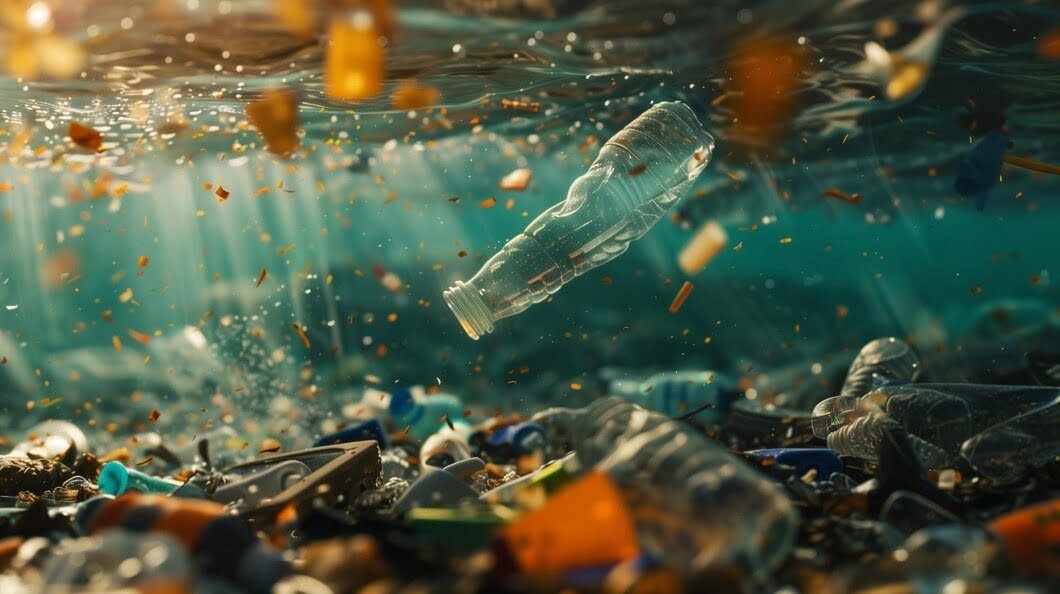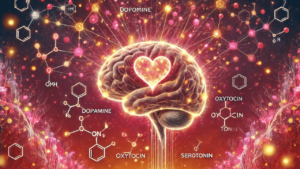“A plastic paradox, where the smallest particles pose the greatest threat…”

In the vast ocean of environmental concerns, there’s a tiny, almost invisible threat lurking beneath the surface – microplastics. These minuscule particles, often less than 5mm in size, are stealthily infiltrating every corner of our world, from the depths of the oceans to the air we breathe. But what exactly are microplastics, and why should we care?
Imagine this: with every sip of water you take, every bite of seafood you enjoy, and even every breath you inhale, you could be unknowingly consuming microplastics. These microscopic plastic particles come from a variety of sources, including the breakdown of larger plastic items, microbeads in personal care products like exfoliating scrubs, and even synthetic fibers shed from our clothes during laundry.
Now, you might be wondering, “So what? They’re just tiny pieces of plastic, right?” Well, here’s the kicker – these seemingly insignificant fragments pack a powerful punch when it comes to their impact on our health and the environment.
First off, microplastics have a knack for attracting and concentrating harmful chemicals like pesticides and industrial pollutants. When marine animals mistake them for food, these toxins can accumulate in their bodies, eventually making their way up the food chain to us humans. So that delicious plate of seafood you’re eyeing might come with an unwanted side of toxins, courtesy of microplastics.
But wait, there’s more. Microplastics have also been found in our drinking water, salt, and even the air we breathe. Talk about omnipresence! While the long-term health effects of ingesting or inhaling these particles are still being studied, it’s safe to say that we’d rather not be guinea pigs in this plastic experiment.
So, what can we do to put the brakes on this Microplastic madness?
Fear not, fellow Earthlings, for there are steps we can take to curb the influx of these pesky particles into our lives.
Firstly, let’s start with the basics: reduce, reuse, and recycle. By cutting down on single-use plastics and opting for reusable alternatives, we can stem the tide of plastic waste that ultimately breaks down into microplastics.
Next up, let’s give our personal care products a makeover. Say goodbye to those exfoliating scrubs loaded with microbeads and opt for natural alternatives like sugar or salt scrubs. Your skin and the planet will thank you.
When it comes to our wardrobes, choosing clothing made from natural fibers like cotton, wool, or hemp can help minimize the release of synthetic fibers during laundry. And if you simply can’t resist that polyester blouse or nylon jacket, consider investing in a microfiber filter for your washing machine to trap those pesky plastic fibers before they enter our waterways.
Lastly, let’s raise awareness and advocate for policies that tackle the issue of microplastics head-on. Whether it’s supporting bans on single-use plastics, advocating for better waste management practices, or demanding stricter regulations on microplastic pollution, every voice and action counts in the fight against this microscopic menace.
Put a break on microplastic:
- Redefine Our Shopping Habits: Choose products with minimal packaging or opt for bulk items to reduce plastic waste. Bring reusable bags, containers, and water bottles whenever possible to avoid single-use plastics.
Embrace Natural Alternatives: Swap out personal care products containing microbeads for natural alternatives like biodegradable scrubs made from sugar or salt. Look for eco-friendly packaging and ingredients in cosmetics and toiletries.
Upgrade Your Wardrobe: Opt for clothing made from natural fibers like cotton, wool, or hemp, which shed fewer synthetic fibers during washing compared to polyester or nylon. Consider investing in a microfiber filter for your washing machine to capture plastic particles.
Mindful Meal Prep: Minimize plastic packaging by shopping at local markets or bulk stores where you can bring your own containers. Choose fresh produce over pre-packaged items and avoid single-use plastics like plastic cutlery and straws.
DIY and Upcycle: Get creative and make your own household cleaners, beauty products, and crafts using natural, non-toxic ingredients. Upcycle old clothing or materials into new items instead of discarding them.
Spread the Word: Share information about the impact of microplastics with friends, family, and on social media. Encourage others to join in reducing their plastic consumption and raising awareness about the issue.
Support Sustainable Practices: Choose brands and businesses committed to reducing their environmental footprint and promoting sustainability. Vote with your wallet by supporting companies that prioritize eco-friendly packaging and production methods.
Get Involved: Join community clean-up efforts to remove plastic litter from local beaches, parks, and waterways. Participate in environmental initiatives and advocate for policies that address plastic pollution on a larger scale.
Educate Yourself: Stay informed about the latest research and developments regarding microplastics and plastic pollution. Knowledge is power, and understanding the issue can empower you to make more informed choices in your daily life.
Lead by Example: Be a role model for others by demonstrating sustainable habits and taking proactive steps to reduce your plastic footprint. Every small change adds up, and collectively, we can make a big difference in combating the microplastic crisis.
Wrapping Up!
In conclusion, while microplastics may be small in size, their impact on our health and the environment is anything but insignificant. By making conscious choices in our daily lives and advocating for change on a larger scale, we can work together to minimize the presence of microplastics and pave the way for a cleaner, healthier planet for generations to come. After all, when it comes to tackling environmental challenges, every little bit – or in this case, every tiny particle – truly does count.
Read More:

The Psychology of Love: Why Valentines Day Matters More Epic Than You Think
Discover the psychology of love and why Valentines Day is more important than you think. Learn how love impacts the brain, strengthens relationships, and boosts

Premier League Highlights: Arsenal Humiliate Man City 5-1, Spurs and Palace Secure Crucial Wins
Arsenal demolished Manchester City 5-1 in a statement premier league highlights win, reigniting their title hopes. Meanwhile, Crystal Palace stunned Man United 2-0, and Tottenham

How Budget 2025 Impacts the Indian Middle-Class: Major Tax Benefits and Glaring Omissions
Budget 2025 offers major tax relief to the middle class, including zero tax on incomes up to ₹12 lakh. However, it misses out on incentives
